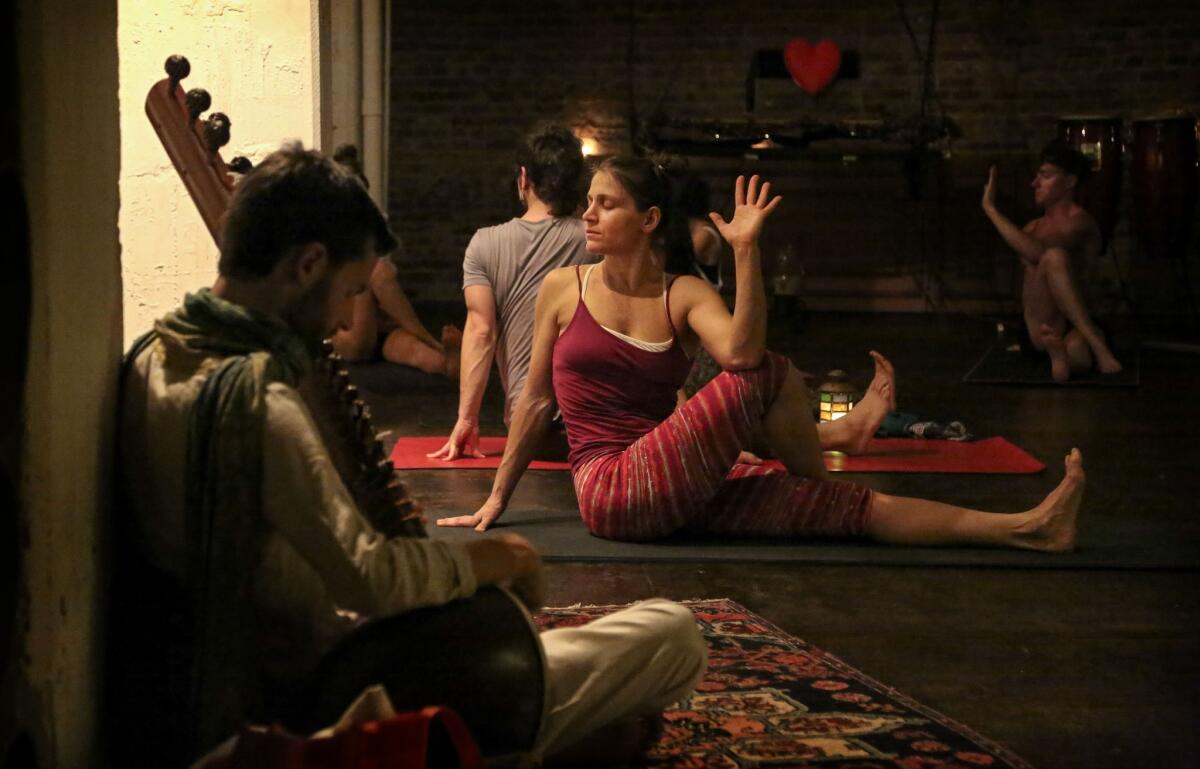Paul’s Kitchen hangs on as City Market Chinatown fades away
The surrounding neighborhood has changed a lot since Paul’s Kitchen opened in 1946, but the Chinese restaurant clings to the past.
Every meal at Paul's Kitchen begins the same way.
A waiter in a spruce green uniform clinks a bowl of crispy noodle sticks onto wood-grain Formica and pours a cup of oolong tea so dark it verges on coffee. He flips open a notepad.
In the kitchen, two huge woks sizzle to life. Within 15 minutes, vintage Chinese comfort food is heaped onto the table, piles of egg foo yong, chop suey and chasu barbecue pork, all swimming in a deep brown gravy.
The food is a throwback to a different era in cuisine — culturally Chinese but unapologetically American — and a lonely survivor of Los Angeles' forgotten City Market Chinatown.
For 23 years, manager Charlie Ng has run the restaurant on downtown's San Pedro Street as his uncle Paul directed, adhering to a business strategy that has over the years been elevated to maxim: Keep everything the same. It's even woven into the restaurant's Chinese name, bao ju — a common naming format for restaurants of the time period that translates literally as "treasure memory."
Here, the dining room's metal ornamentation stays pink and the horseshoe nailed over the door for feng shui has never moved. Each day, Ng dons the same threadbare green uniform he's worn for years, and every lunch hour, he needles his customers with the same jokes about their age, their wrinkles, their white hair.
The regulars endure the insults. After all, Paul's Kitchen offers a commodity in short supply outside the restaurant's smudged windows: permanence.

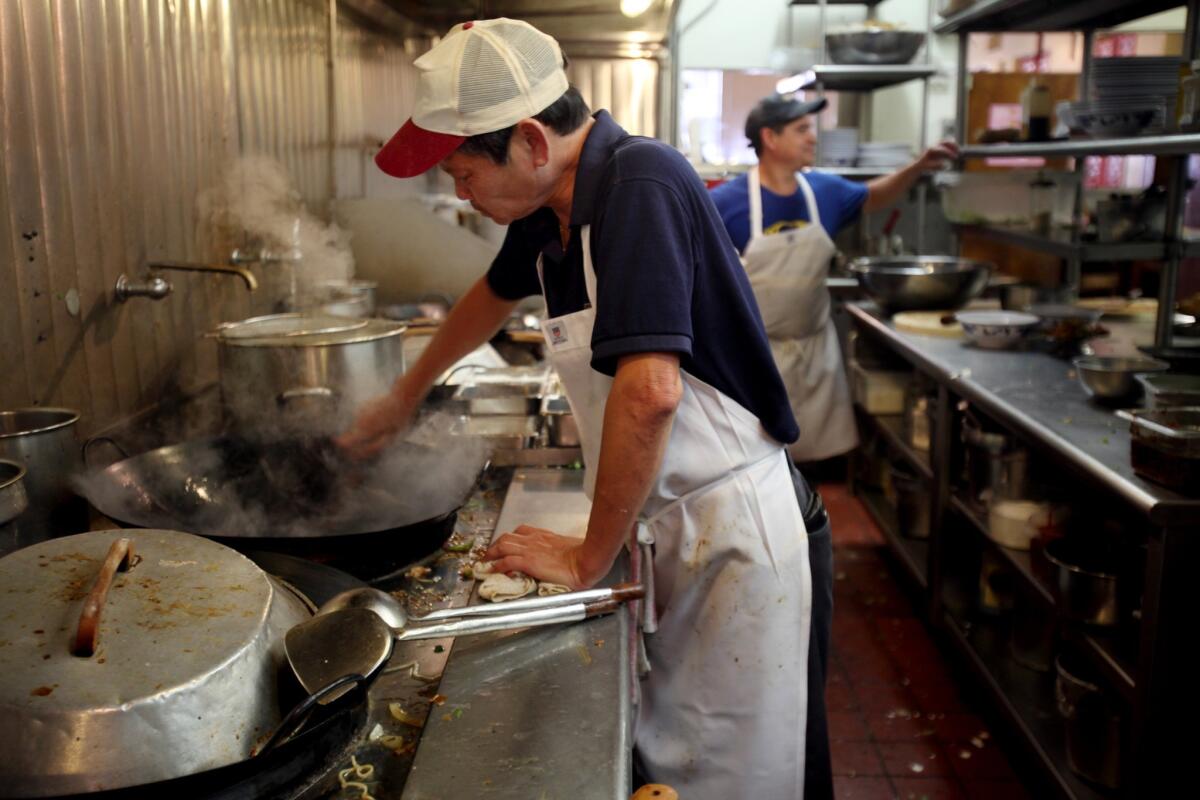
Chef Xing Hoang works in Paul's Kitchen, which turns out heaps of egg foo yong, chop suey and chasu barbecue pork, all swimming in a deep brown gravy. The food is a throwback to a different era in cuisine -- culturally Chinese but unapologetically American. More photos
When Paul's Kitchen opened in 1946, then known as Paul's Cafe, it was just one of many Chinese restaurants, grocery stores and gambling parlors extending a few blocks in both directions from the City Market, Los Angeles' largest produce market.
Bolstered by a growing Chinese residential community at East Adams Boulevard and San Pedro Street to the south, the neighborhood grew when the original Chinatown was razed to make way for Union Station in the 1930s.
Tourists flocked to the humming night life, gift shops and neon architecture of "New Chinatown" to the north, but this was the workers' Chinatown, a place to get a $2 bowl of noodles and take your paycheck for a spin at a gambling parlor.
Immigrants formerly confined to cramped ghettos moved to San Pedro Street to enjoy houses with lawns. Families attended services at First Chinese Congregational Church at 9th Place. Groups like the Bow On Family Assn., which still owns the building that houses Paul's Kitchen, helped new immigrants get on their feet. A recreation hall above the City Market offered tai chi classes.
The community was smaller then. Just a few thousand Chinese people lived in the city.
"Everybody basically knew each other," said Dennis Kum, 56, who started working at Man Fook Low on San Pedro Street as a kid.
At 10 a.m. each day, Kum's family would open their restaurant's doors to a stream of Chinese produce workers clocking out after a morning shift at the market. They cooked with fresh noodles and groceries from suppliers up the street.
Near Paul's Kitchen is the Hong Kong Noodle Factory, the only other holdover from the old Chinese community days. More photos
With that fresh produce in such close proximity, a lively row of Chinese restaurants sprouted.
Man Fook Low, which opened in 1928, was arguably the first restaurant to serve dim sum in Los Angeles, offering chasu pork buns, hargow and shumai as early as the 1930s. It became a favorite of actress Mae West. (A 1976 article in The Times described a party at the restaurant given by the "sloe-eyed and sassy" West, who declined to satisfy those playing one of the evening's guessing games: her age.)
Nearby, Hong Kong Noodle Factory is one of the three Asian food companies that claim to have created the fortune cookie some time in the early 1900s. They were called tea cakes back then and were served to customers before meals at a restaurant in the same building as the factory.
Chop suey, that's a very old dish. But this guy, he's older."
New Moon Restaurant claimed to be the creator of the Chinese chicken salad, a mishmash of iceberg lettuce, crushed nuts, chicken and sesame sauce.
In City Market Chinatown and elsewhere, Cantonese recipes and American-grown produce combined to form the cuisine that served as Southern California's introduction to Chinese food. (In a 1971 Culinary SOS column in The Times, a reader sought the recipe for the "out of this world" — but not exactly authentically Chinese — beef tomato chow mein at Paul's Kitchen.)
"That style of cooking has really become a part of everyone's idea of comfort food," said Eugene Moy, vice president of the Chinese Historical Society of Southern California.
Moy calls it Depression-era Chinese food: generous, greasy, glutinous and increasingly rare.
City Market Chinatown began to fade in the 1970s. New Chinatown had grown in prominence and popularity. A new wave of immigration shifted the Chinese community's epicenter east to Monterey Park and Alhambra.
When homeless encampments in skid row crept south in the 1980s, it signaled the end for many in the community. Residents and businesses left for the newer communities in droves.
Restaurants were some of the last places to let go. Today, Paul's Kitchen and Hong Kong Noodle Factory are all that remain.
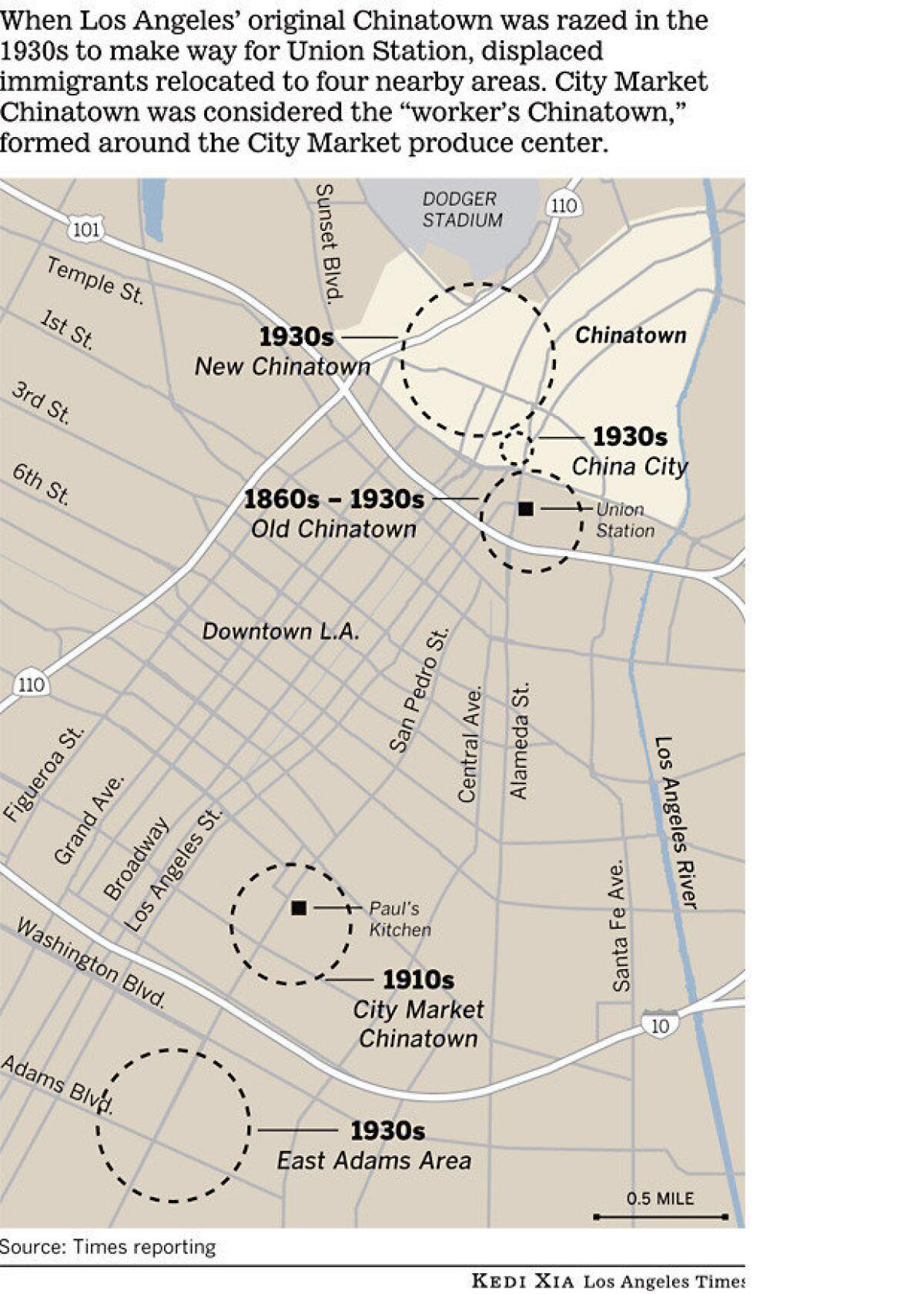
Man Fook Low closed in 1990 and New Moon the year after that. Sales plummeted without the Chinese community in the neighborhood, and few of the descendants of the original owners wanted to go into the family business.
"I think my parents wanted us to move on," said Colin Tom, whose parents ran New Moon. "They knew how hard the work was, the pennies they received."

Paul's Kitchen stayed on San Pedro Street. Ng took over in 1990, and he has never considered moving.
"I wouldn't want Paul to be disappointed," Ng said.
Today the City Market produce building has been replaced by a swath of sky. The building was torn down a few years ago and in its place a developer has proposed a $1-billion project with housing, a school and creative office space.
Across the street, Ng has been forced to cut the restaurant's hours, and dinner business has slowed to a crawl.
But it's tough to get a seat during the lunch hour. Large portions, low prices and now-classic recipes have lured a mix of old and new generations of regulars: fashion district workers from nearby factories and office parks, commuters from San Diego and Ventura counties on circuitous detours, and a few elderly Chinese men, reminiscing about the old neighborhood over cups of oolong tea.
Former Dodgers manager Tommy Lasorda still eats here a few times a year. He discovered the place in the 1970s and often brought players over after games. His special is still printed at the top of the menu — a dizzying panoply of wonton soup, egg rolls, chasu, spare ribs, asparagus with beef, kung pao chicken and house special fried rice, served to a minimum of two people.
The walls feature so much Dodger paraphernalia that the restaurant is more clubhouse than Chinese restaurant. The tables are stocked with bottles of ketchup and Tapatio hot sauce. Lucky cat statues swipe their paws next to baseball bobbleheads and a Santa snow globe on the wooden shelves behind the bar.
At the register, Charlie Ng heckles his regulars, his eyes bright behind eyeglasses tinged yellow.
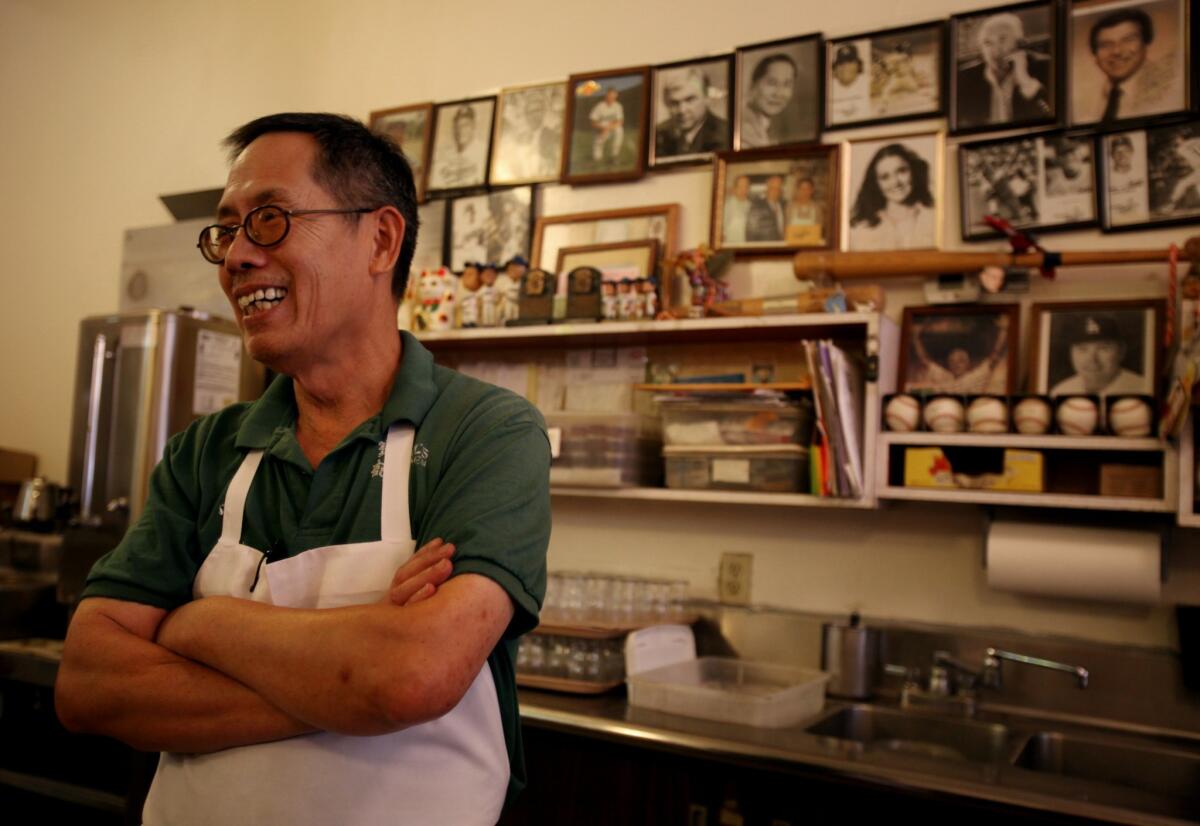
For 23 years, manager Charlie Ng has run the restaurant on downtown's San Pedro Street just as his uncle Paul directed, adhering to a business strategy that has over the years been elevated to maxim: Keep everything the same. More photos
"Chop suey, that's a very old dish," he says, then points to a customer seated at the counter. "But this guy, he's older."
Larry Grauman, 65, rolls his eyes and places an order for chasu barbecue pork with rice and gravy on the side.
Grauman lives in Ventura County and works in the San Gabriel Valley. Once a week, for the last 30 years, the demolition contractor has battled traffic along the 10 Freeway and up San Pedro Street for a seat at Paul's Kitchen.
He's heard that the Chinese food near his office in Alhambra is better, but he isn't interested.
"I'm not an expert in what's authentic and what's not," says Grauman, dipping a crispy noodle stick into a small dish of ketchup. "I only know what has been on the menu for years and years."
Ng's regulars are undeniably loyal. But there are fewer every year.
So he makes sure that every meal at Paul's Kitchen ends the same way.
"See you tomorrow," he barks as you walk out the door.
He can only hope.
Follow Frank Shyong (@frankshyong) on Twitter
Follow @latgreatreads on Twitter
More great reads
Bernstein High football players earn letters — of parents' love
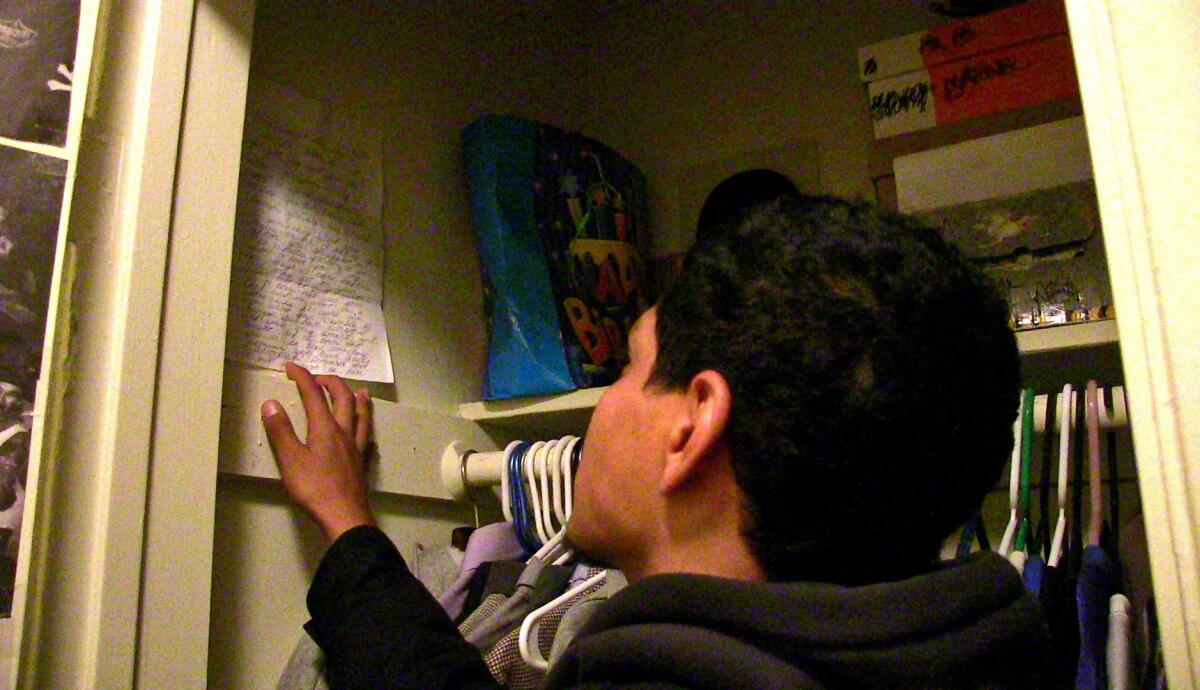
I love you. And you're the most important thing in my life. You know I would die for you."
A hostile school environment, but 'these are not bad kids'
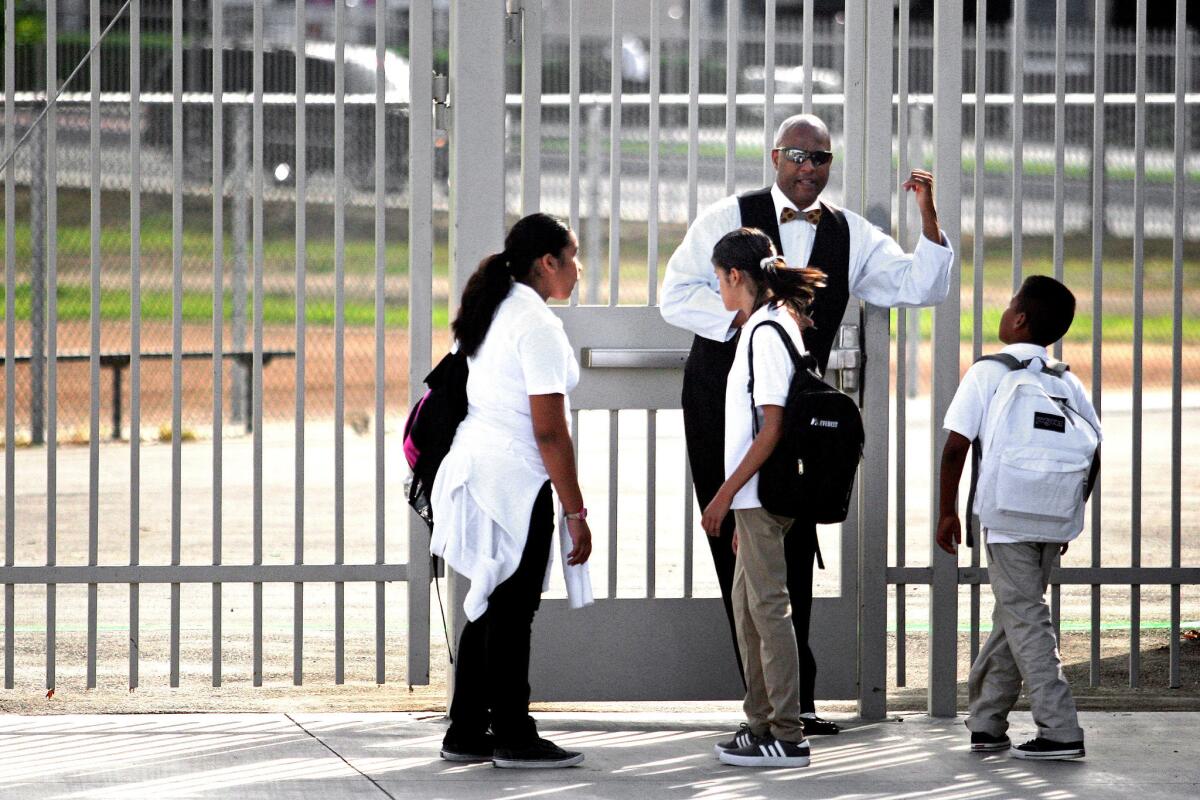
No one on this campus will be threatened by other students."
Sign up for Essential California
The most important California stories and recommendations in your inbox every morning.
You may occasionally receive promotional content from the Los Angeles Times.
